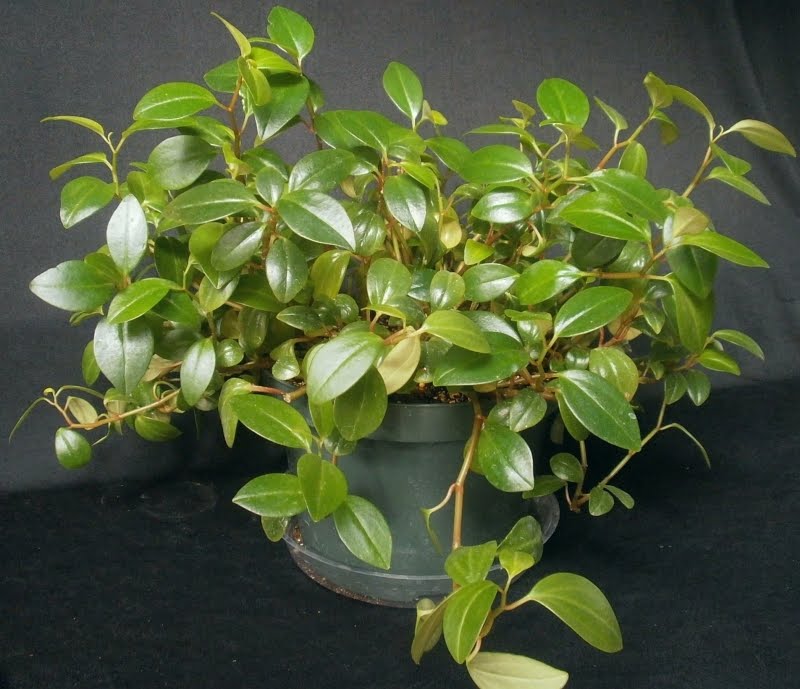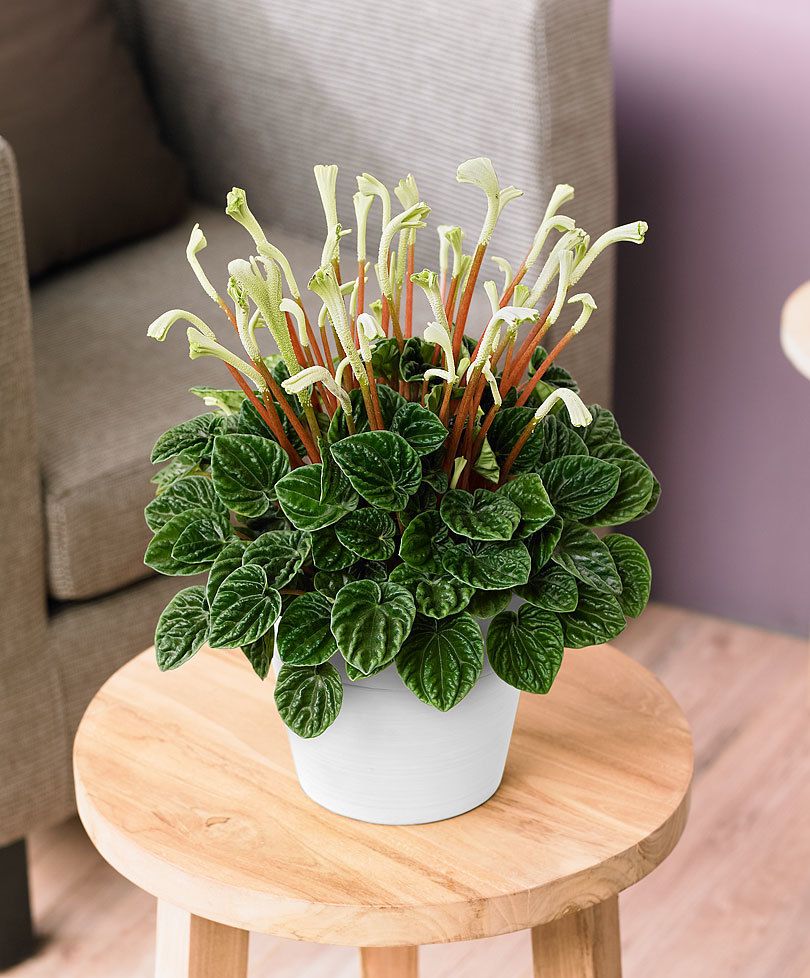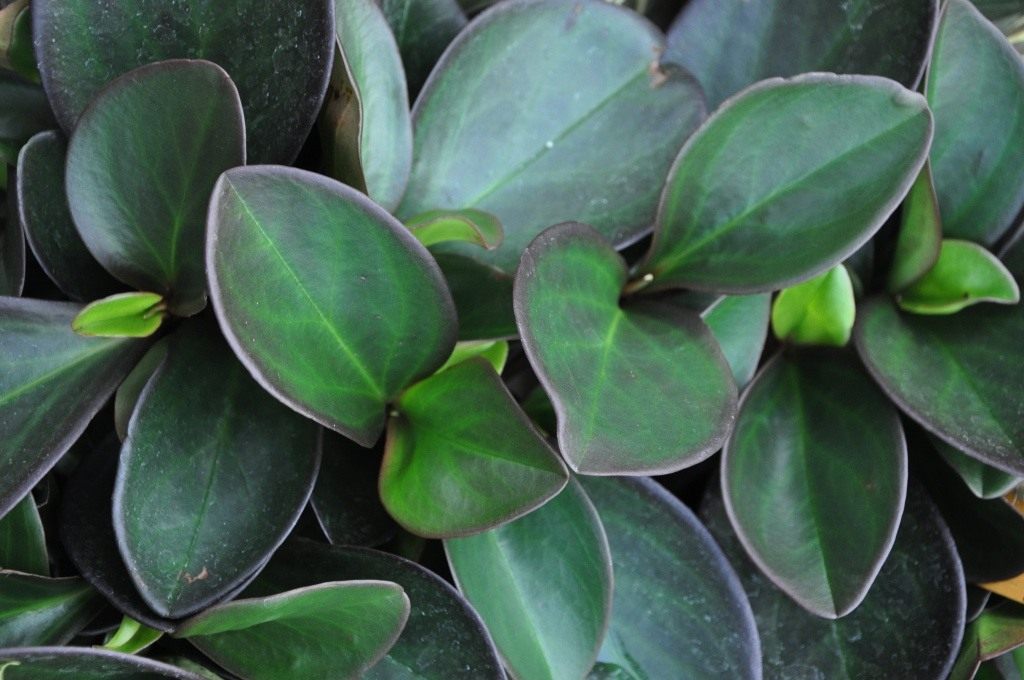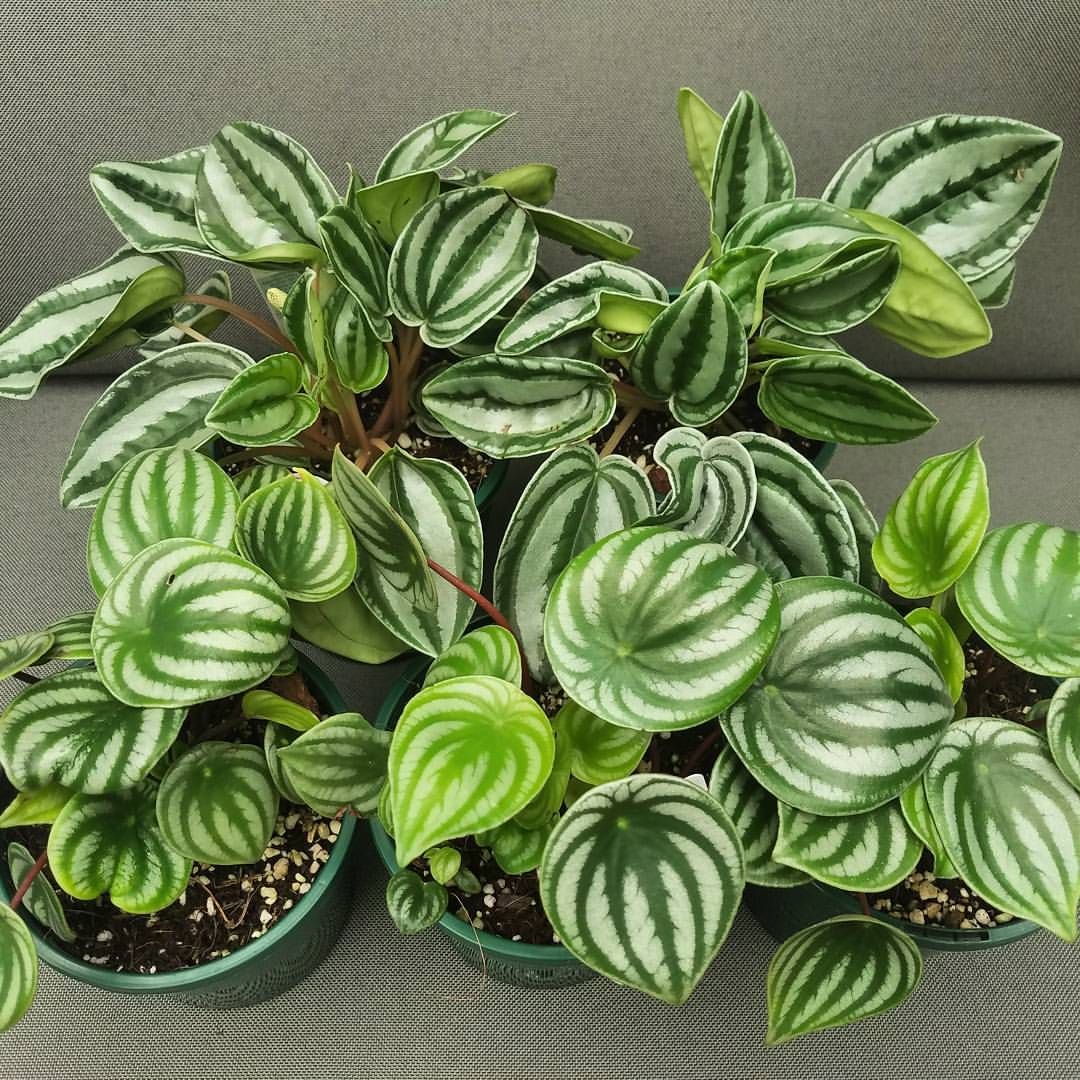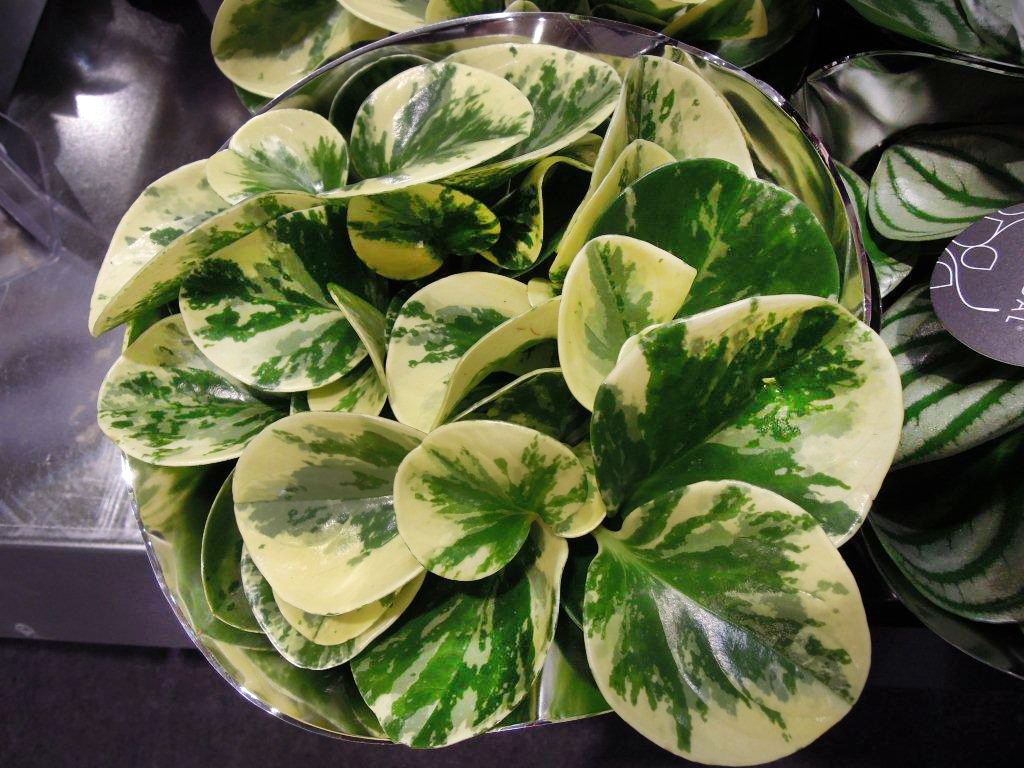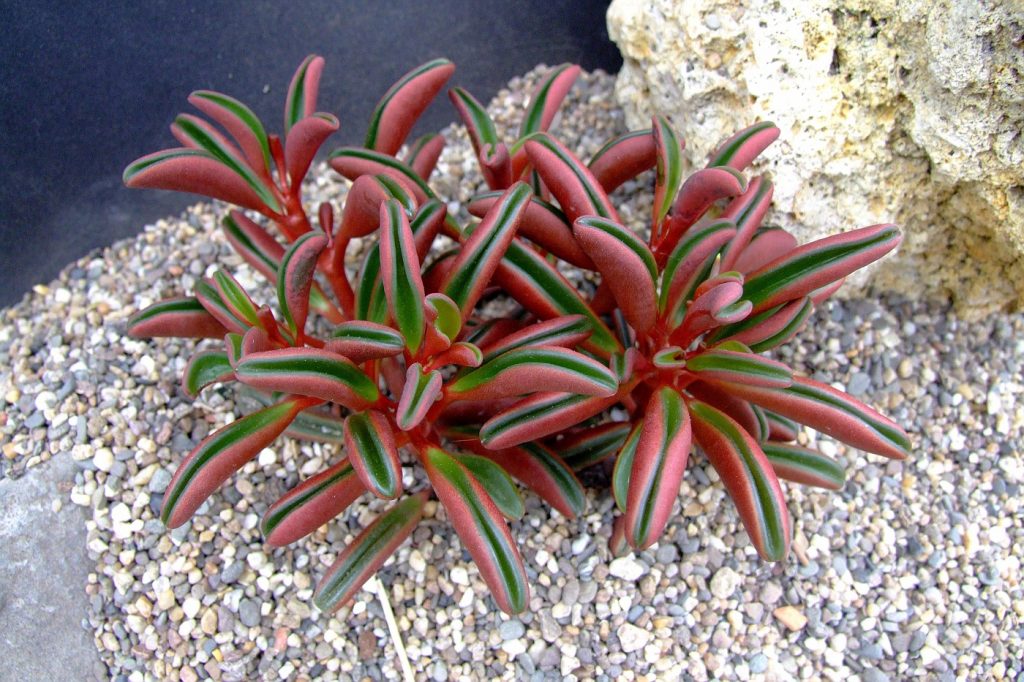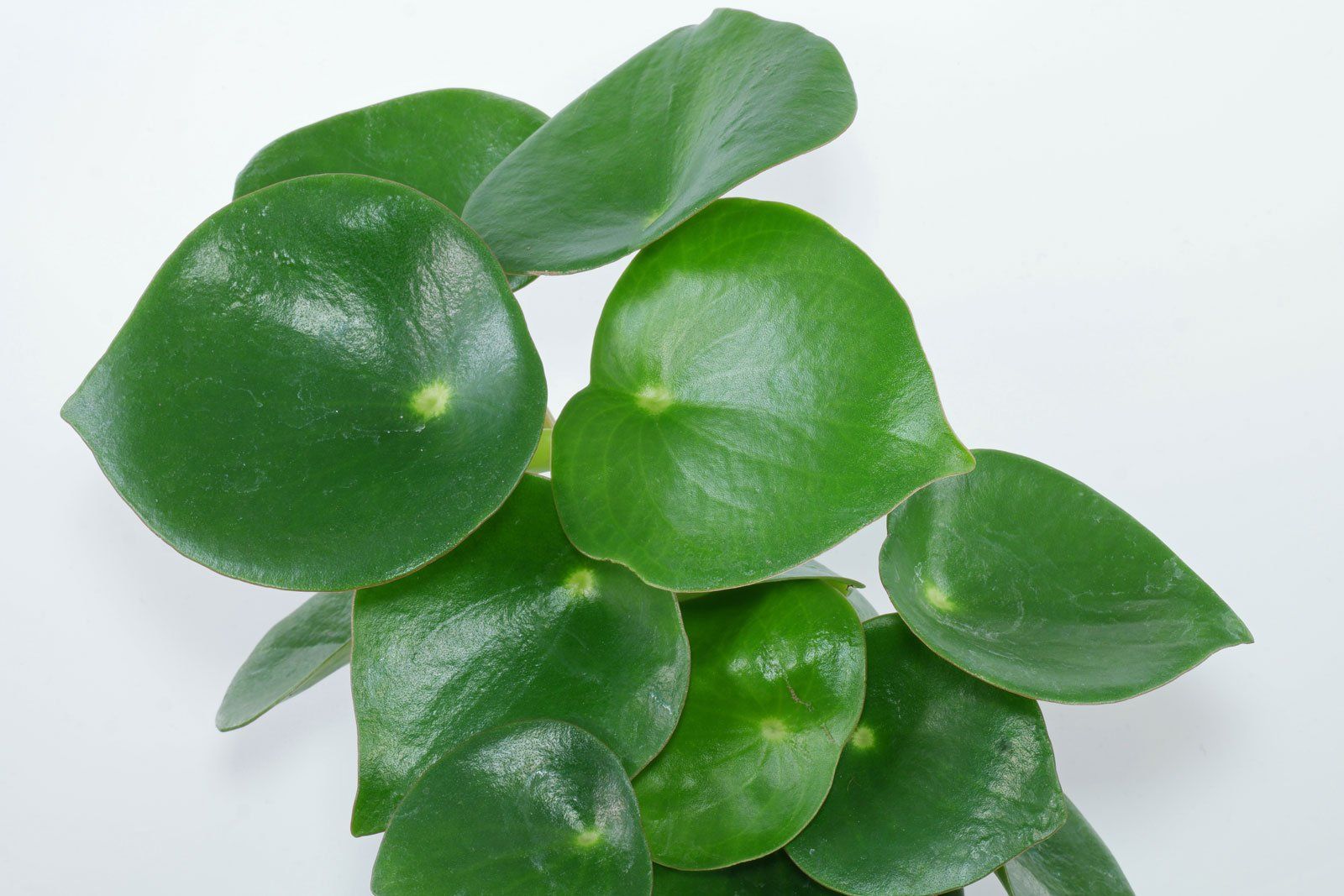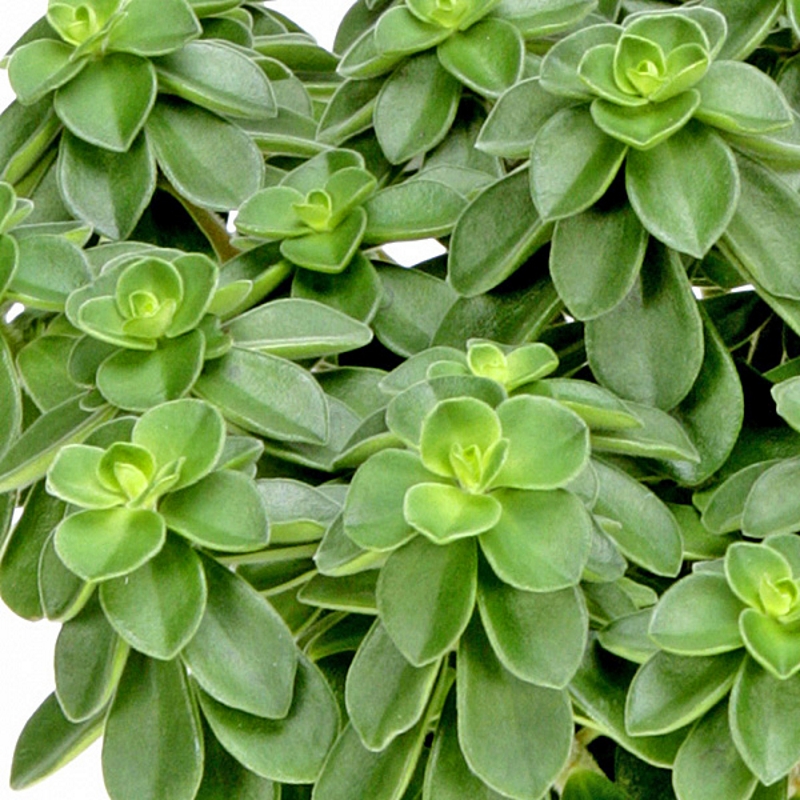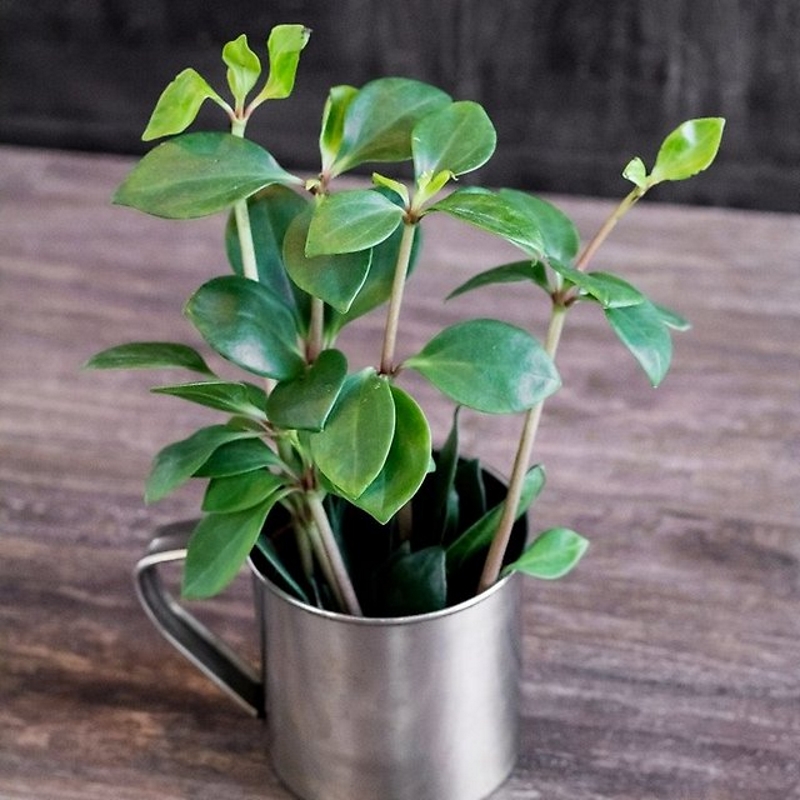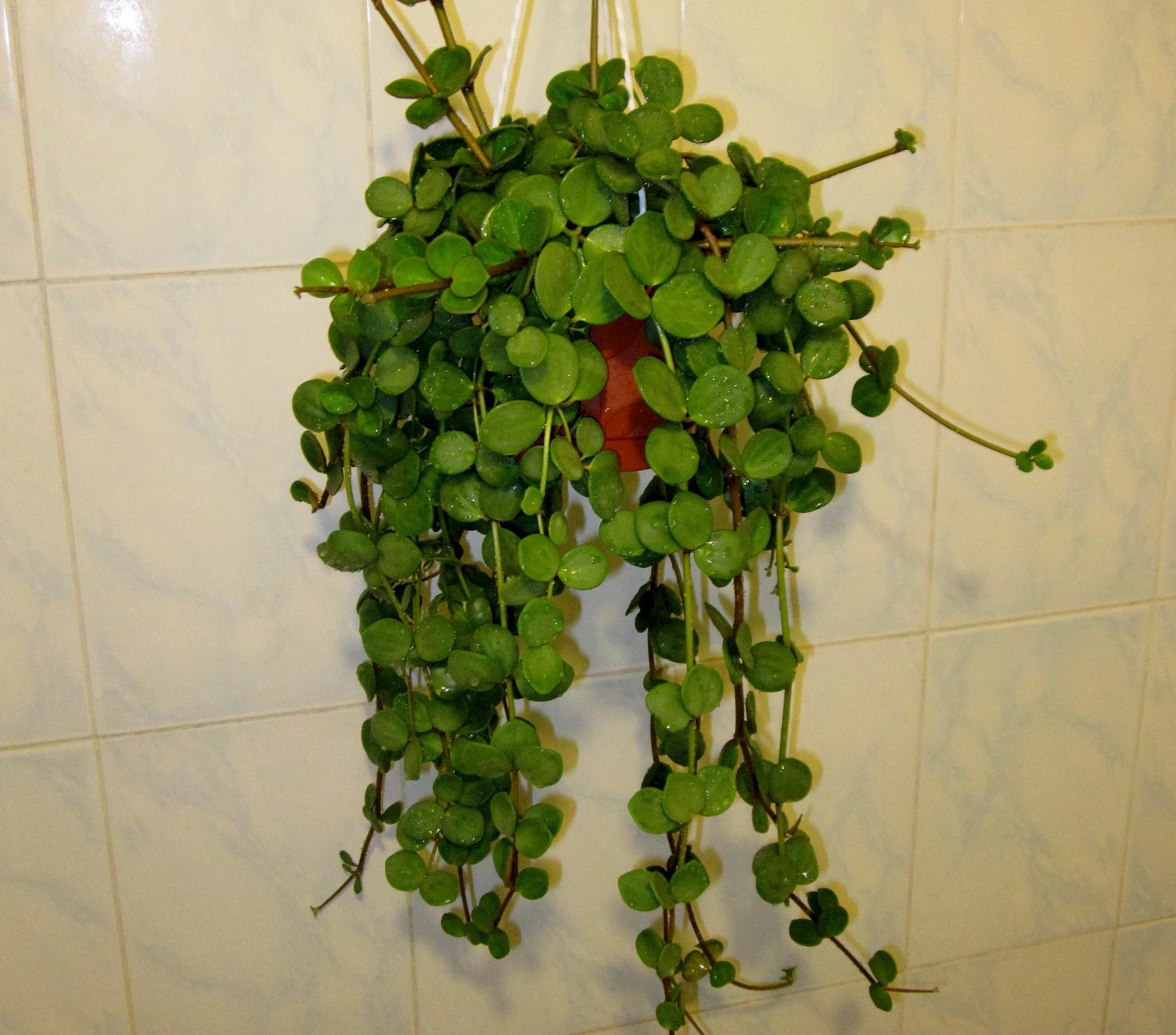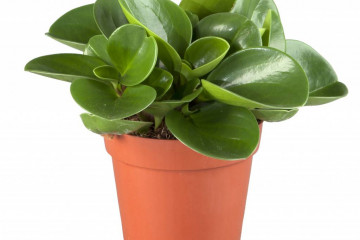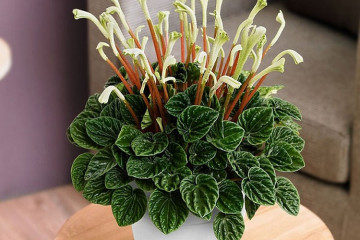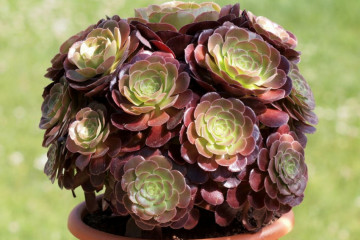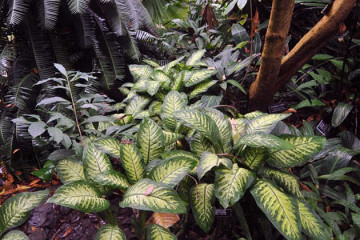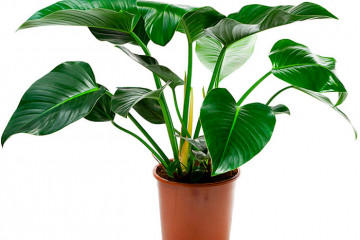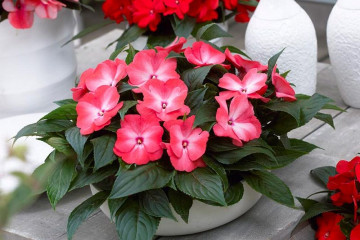Peperomia - types of tinny, shriveled, clusiform, watermelon, variegated
Content:
The genus of perennial evergreen herbaceous plants Peperomia belongs to the Pepper (or Pepper) family. The flower grows in the tropical regions of Asia and America. The plant prefers shaded areas, often located on rotting trunks, peaty soils and even rocks. Peperomia boasts an amazing variety of species and varieties that differ from each other in their original shape and color. The leaves of this culture are quite dense, which brings the plant closer to succulent forms. The article will discuss what peperomia is: types, features of care, scope.
Peperomia: a short description and types
The zest of various species of this plant is foliage, which is small or large, thin or dense, smooth or wrinkled, round or oblong, etc. The color varies from golden and brown to light and dark green. Also, the coloring can be diluted with spots and stains of a white or yellow shade.
Flowering occurs in the spring and summer. At this time, numerous shoots with very thin, elongated inflorescences of pinkish or cream color rise above the foliage of peperomia. Ripe fruits on the surface of the flowers look like small berries that are very easily separated from the plant.
In height, the bush can reach from 15 to 50 cm.
In floriculture, peperomias are highly valued for their decorative properties, variety of species and undemanding care.
Among the numerous forms of peperomia, both erect and branching (which are grown as ampelous) species stand out. There are also bush-like crops.
Peperomia is characterized by slow growth (the length of the shoots increases by 13 cm annually) and not the most powerful root system, therefore it is often used in floral arrangements (for example, together with citrus fruits or monstera).
The arrangement of the petiole leaves is alternate.
Flower reproduction can be done in three ways:
- cuttings;
- seeds;
- dividing the bush.
Popular varieties
The genus Peperomia includes 1161 species, of which about 50 varieties are grown at home.
Peperomia headache
It belongs to the ampelous varieties, since it has long, thin, branching stems. Their surface is decorated with small, rich green oval leaves with a shiny surface.
The name of the culture reflects the unusual, head-like appearance of the leaves.
This species belongs to the category of shade-tolerant plants.
The flower is recommended to be grown in hanging pots.
Peperomia shriveled
The foliage surface of this plant is corrugated, velvety, the color is dark green, not counting the brown veins. There are also varieties with purple and red foliage. The plates are medium-sized in size, have a heart-shaped shape and are quite close to each other.The shoots are short, so the bush looks squat, but at the same time very luxuriant.
The culture blooms for two months in the summer with white inflorescences, which rise in a dense group above the spectacular greenery. Flowers do not emit aroma.
Thick foliage is capable of accumulating liquid. The roots are superficial.
As for caring for shriveled peperomia at home, the recommended temperature for growing a flower is 23 ° C. Moderate watering can be combined with spraying (except for varieties with pubescent leaves).
Peperomia wrinkled needs fertilization every two weeks. In winter, feeding is not required. Transplant the culture in spring or summer. The planting is carried out in loose soil, consisting of sod, leaf and peat soil, as well as sand.
Peperomia clusiform
The plant is distinguished by erect thick stems that cover large obovate leaves of a dark green color, located on short (up to 1 cm) petioles. The length of the leaf plate reaches about 15 cm, in width - 8 cm. The surface is matte. The edges of the leaves are bordered with reddish-brown stains. Most of them are collected at the bottom of the shoots.
It is recommended to grow a flower on east or west windowsills. If you place the specimen on the north window, then additional lighting will be needed in the winter.
Drafts are not allowed. The air temperature should be about 20-23 ° С regardless of the season. Peperomia tolerates low temperature conditions very poorly and can get sick. In hot weather, it is recommended to spray the flower.
Peperomia watermelon
The name of this species symbolizes the variegated color of the shiny heart-shaped leaves, reminiscent of a watermelon rind. The shape of the leaves is ovoid, the length of the plate varies from 5 to 8 cm.
The height of reddish shoots does not exceed 12 cm. A compact stocky plant in the wild is a ground cover. In the same capacity, the culture can be used in a home environment. Low-growing peperomia works great with other, larger flowers and is also ideal for covering bare soil in pots.
With good care, the culture actively develops and turns into a lush bush.
The flower needs bright diffused light, moderate watering and warm air. It is recommended to fertilize the plant with nitrogen fertilization.
The soil for planting peperomia must be air permeable, otherwise the roots will begin to rot. This crop responds well to regular spraying.
Peperomia variegated
This variety comes from peperomia kusielistnaya. The colors of the oval foliage include two shades at once: a beige edging is located around the green center. Due to its small size, the culture has a compact appearance, so it will not be difficult to find a suitable place for a flower on any windowsill.
The culture goes well with other representatives of the flora, especially in those compositions where it is necessary to dilute the palette of green shades.
For normal development, the flower needs bright diffused light.
Peperomia graveolens
The flower resembles sea corals in its appearance. Dense leaf plates 5 cm long and 1 cm wide have an elongated and twisted shape. The upper part of the leaf is colored green or light green, and the lower part is colored burgundy, scarlet and other shades of red. The middle of each leaf is decorated with a bright green hollow.
The height of the bush can reach 25 cm.Light yellow flowers in the form of ears look very beautiful against the background of "coral" greenery.
A flower transplant is carried out if necessary, when the bush grows to such a size that it will be cramped in an old pot.
Peperomia multi-arm
This variety is rarely grown at home. The place of origin of culture is countries such as Peru, Colombia, Ecuador.
The height of the bush is from 20 to 50 cm. The shape of the leaves is conical (reminiscent of a plantain), the color is dark green. The flowers are white or beige. Shoots are strong, well developed.
Peperomia whorled
This species is characterized by branched stems. Dark green oval or diamond-shaped leaves are collected in whorls of 3-5 pcs.
Due to the branching shoots, the flower is suitable for ampelous cultivation. The flowering period is in June. The annual growth of young specimens is 10-13 cm.
The recommended temperature for growing a flower is from 20 ° C to 24 ° C in the summer and from 15 ° C to 18 ° C in the winter. During the rest period, you should also reduce the frequency of watering.
The flower is able to withstand low temperatures, but not lower than 10 ° C.
Monochrome varieties prefer shaded areas, variegated forms require more sunlight.
Neutral soil is suitable for planting. The frequency of watering should be 1 time in 10 days (reduced in winter).
Peperomia pereskyely
The flower is rather large, has long branching shoots. The young plant has erect stems, which eventually sink under their own weight. Oval leaves grow in groups of 3-5. The length of the leaf plate is 3-5 cm, the width reaches 2-3 cm. 2-3 curved veins are observed on its glossy surface. Petioles are practically absent.
Other popular plant species include:
- ivy;
- peperomia silvery;
- glabella peperomia;
- peperomia is pitted;
- peperomia of the orb;
- peperomia is round-leaved.
- peperomia of polybotrium;
- small-leaved peperomia;
- variegated peperomia;
- peperomia is gray.
The genus Poperomia includes a huge number of species, each of which surprises with its original beauty. Such a wide assortment allows you to choose suitable items for every taste of the florist.
